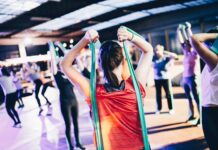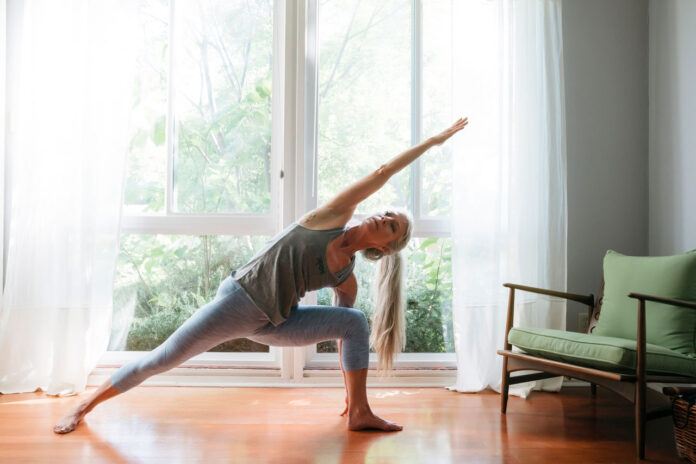
Pilates is a popular form of low-impact exercise. This exercise aims to strengthen the core. Added benefits include improved flexibility and posture, and increased physical awareness.
As a Pilates instructor, it is important to design safe and effective routines for your beginner clients. Here are some tips for creating a Pilates routine for beginners.
Read on!
Start With a Warm-up
Begin each Pilates session with a warm-up to increase heart rate and prepare the body for exercise. This can include light cardiovascular activity. You can do things such as marching or jogging in place, as well as gentle stretches to loosen the muscles.
A warm-up is especially important for beginners, as it helps reduce the risk of injury and improves performance.
Focus On Foundational Movements
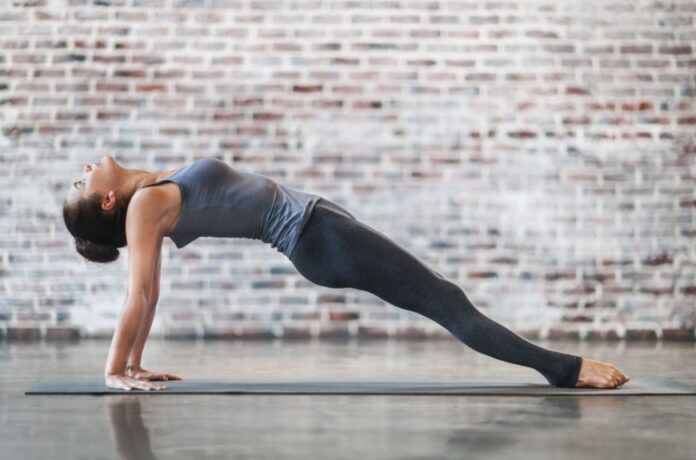
Pilates is built on a series of fundamental movements. Instructors have learned these from programs like the one on this link: https://www.americansportandfitness.com/products/pilates-certification.
These movements include such as the hundred, roll-up, and single-leg circle. These exercises are great for beginners because they provide a foundation for more advanced movements. They also target many muscle groups at once.
By starting with these basic movements, beginners can develop proper form and technique. This is essential for getting the most out of Pilates.
Gradually Increase Intensity
Gauge as your beginner clients become more comfortable with the foundational movements. When this happens, you can gradually increase the intensity by adding small pieces of equipment.
This includes resistance bands or small weights. You can also increase the number of repetitions or hold each exercise for longer periods of time. It is important to remember that everyone is different and progresses at their own pace.
So it is crucial to listen to your clients’ bodies and adjust the intensity accordingly.
Incorporate Balance and Coordination Exercises
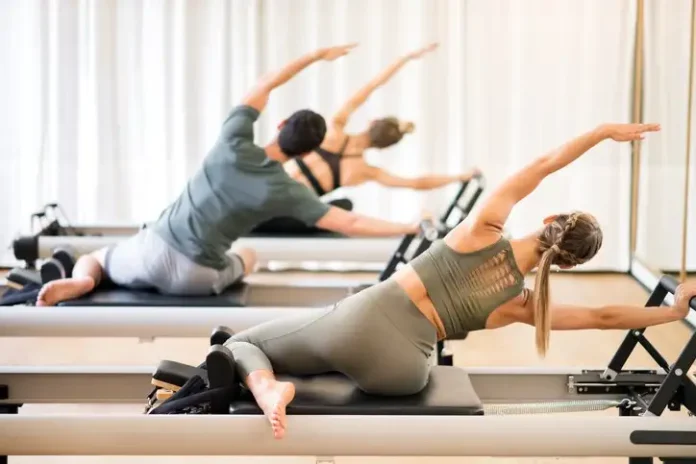
A Pilates workout is not just about strengthening the core. It also helps improve balance and coordination. Beginner routines should include exercises that challenge these skills.
This includes single-leg stretches or balance on a stability ball. These types of exercises can help beginners develop body awareness and control. These are essential for performing more advanced Pilates movements.
End With a Cool-down and Stretch
It is important to end each Pilates session with a cool-down. Do this by stretching to allow the body to recover and prevent muscle stiffness. This can include gentle stretches and deep breathing exercises.
A cool-down session is especially important for beginners. Doing these things helps prevent dizziness and fatigue. It can also improve relaxation and recovery.
4 Benefits of Pilates
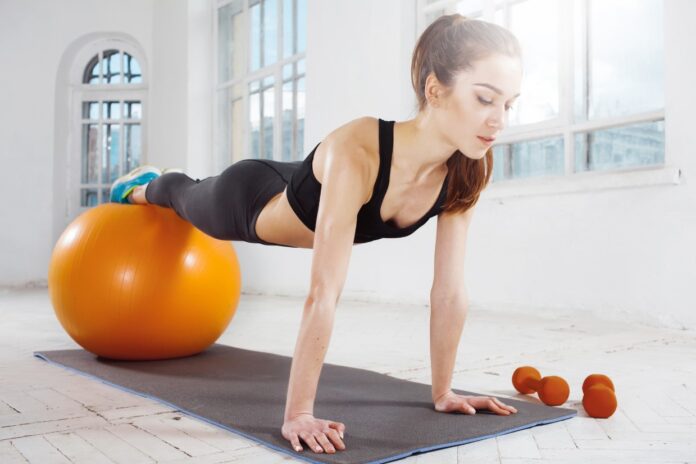
Pilates is an excellent exercise choice for beginners as it provides a full-body workout that is low on impact. This helps to minimize the risk of injury and it can easily be modified as your fitness levels increase. Pilates also offers several specific benefits that make it ideal for beginners:
1. Builds Strength
Pilates exercises are mainly focused on your core muscles, such as your abs, lower back, and hips. These exercises also help strengthen other areas like your arms, legs, glutes, and shoulders.
2. Improves Balance
Certain Pilates exercises have a balance component that helps improve overall coordination and prevent falls or stumbles while performing everyday activities.
3. Increases Flexibility
By performing stretching exercises specifically tailored for each muscle group in the body, you’ll develop increased flexibility in no time at all.
4. Develops Better Posture
Core strengthening Pilates exercises can help improve posture by realigning the spine and strengthening weak muscles throughout the entire body.
Another benefit of Pilates is that you need very little equipment to get started – just a mat or soft surface – meaning you can do it anytime, anywhere at home!
Sample Pilates Routine
If you’re new to Pilates and want to give it a try, here is a sample beginner’s routine to get you started. Before beginning any exercise program, it is important to talk with your doctor.
This routine targets all the major muscle groups and should take no more than 30 minutes if done correctly. Remember, correct form is essential to avoid injury and get the most out of your workout:
- Start by warming up for 5 minutes, either walking in place or jogging on the spot
- Do 10 repetitions of each of the following exercises:
- Child Pose: Begin in a kneeling position on the floor and lean forward until your forehead touches the floor. Remain in this pose for 15-30 seconds.
- Cat/Cow Pose: Start off in a tabletop position (on hands and knees) with your back straight, then tuck your chin towards your chest as you round your back (cat), followed by arching it slightly (cow). Inhale during the cow pose and exhale during the cat pose. Repeat 8-10 times.
- Up Down Dog Pose: Start in a tabletop position again but this time extend one leg behind you while keeping both hands firmly planted on the ground near shoulders width apart. Push down through both hands while extending one leg upwards as if trying to reach as far away from you as possible. Alternate legs 8–10 times per side.
- Seated Twist: Sit cross-legged on the floor or mat with a long spine, clasp opposite elbows behind the back. Engage core muscles and twist hips slowly side-to-side—keep chest lifted and abdominal muscles pulled in throughout movement; repeat 8-10 times in each direction alternating sides each time.
- Cool down with gentle stretching for 5 minutes
- Be sure to finish off your session with some deep breathing exercises for 10 minutes
An Effective Pilates Routine for Beginners
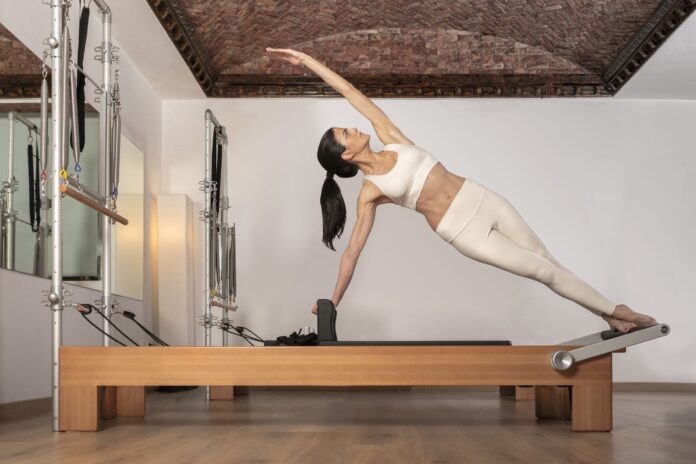
In conclusion, designing a Pilates routine for beginners requires a focus on foundational movements. It also involves gradual intensity increase, and balance and coordination exercises.
By following these, instructors can create a safe and effective pilates experience for beginners. Guiding them in a beginner Pilates exercise program is very important. In doing so, they can reap the many physical and mental benefits.
So, if you have yourself a beginner, stick with Pilates principles. These can help them be better soon!
For more tips and guides, visit our blog today.




